 Miscellaneous
Miscellaneous  Miscellaneous
Miscellaneous  History
History 10 Times Governments Banned Colors for Bizarre Reasons
 Health
Health 10 Terrible New Health Findings
 Weird Stuff
Weird Stuff The 10 Biggest Celebrity Death Hoaxes Ever
 Miscellaneous
Miscellaneous 10 Fascinating and Unexpected Uses of Poetry from History
 Movies and TV
Movies and TV 10 Horror Films That Failed to Launch Their Franchise
 Animals
Animals Ten Animals That Are More Musical Than You Might Think
 Technology
Technology 10 Human Inventions That Are Rewriting the Future
 Movies and TV
Movies and TV 10 Memorable Movies That Involve or Hint at Interspecies Romance
 History
History 10 Times Historical Figures Got Humbled
 Miscellaneous
Miscellaneous 10 Allegories That Imagine if Countries Were People
 History
History 10 Times Governments Banned Colors for Bizarre Reasons
 Health
Health 10 Terrible New Health Findings
Who's Behind Listverse?

Jamie Frater
Head Editor
Jamie founded Listverse due to an insatiable desire to share fascinating, obscure, and bizarre facts. He has been a guest speaker on numerous national radio and television stations and is a five time published author.
More About Us Weird Stuff
Weird Stuff The 10 Biggest Celebrity Death Hoaxes Ever
 Miscellaneous
Miscellaneous 10 Fascinating and Unexpected Uses of Poetry from History
 Movies and TV
Movies and TV 10 Horror Films That Failed to Launch Their Franchise
 Animals
Animals Ten Animals That Are More Musical Than You Might Think
 Technology
Technology 10 Human Inventions That Are Rewriting the Future
 Movies and TV
Movies and TV 10 Memorable Movies That Involve or Hint at Interspecies Romance
 History
History 10 Times Historical Figures Got Humbled
10 Everyday Ways We’re Destroying The Planet
It’s no secret that our planet is in a pretty dire condition. Extinction rates have been estimated to be about 1,000 times higher than they should be, and that’s all due to human influence—and interference. With around 20,000 species at risk for extinction and countless others that we haven’t even discovered yet also dying, scientists are rushing to figure out what we can do about it. Some have suggested the sixth great mass extinction is looming on the horizon, and the problem is a massive one. It’s so big that there are things that you do every day that are helping to bring about the end of the world, and chances are that you might not even know it.
10 Using Disposable Chopsticks
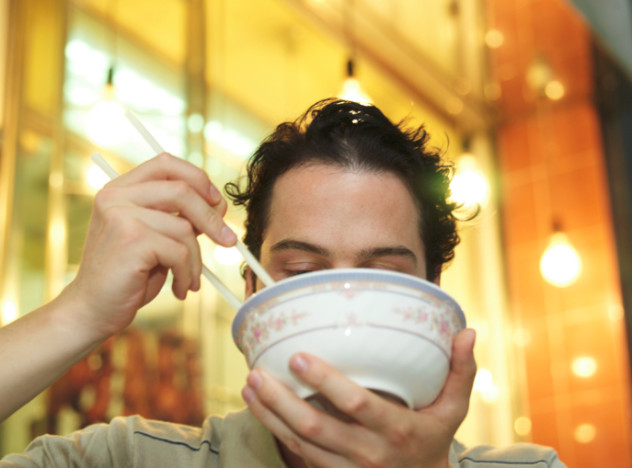
Chances are good that you don’t even think about environmental impact when you pull a pair of wooden chopsticks out with your order of takeout, but those chopsticks are having a devastating impact on China’s forests. China produces a whopping 80 billion disposable chopsticks every year. The vast majority are used—and thrown away—in China itself. A mind-blowing number, 80 billion is enough to blanket Beijing’s Tiananmen Square in at least 360 layers of chopsticks.
That kind of production takes 20 million trees, and not just any trees. Twenty-year-old trees. The impact of that is exactly as bad as you’d think. China suffers from a major deforestation problem for no reason other than chopsticks. It’s also not helped by the fact that demand for disposable wooden chopsticks is increasing dramatically, up from 57 billion in 2009. That’s resulted in China ranking somewhere around 139th place when it comes to per capita forest coverage with less than a quarter of the world’s average.
The problem has gotten so bad that China is now imposing restrictions on the production of chopsticks, limiting quantities companies can produce and increasing the taxes imposed on purchases. They’re also starting a big push to introduce the idea of carrying reusable chopsticks in a bid to aid in the recovery of the nation’s forests. By 2020, they hope to add 40 million hectares of trees, but that can only happen if they can alleviate some of the stress placed on the environment by chopsticks.
9 Birth Control Is Working On Fish, Too
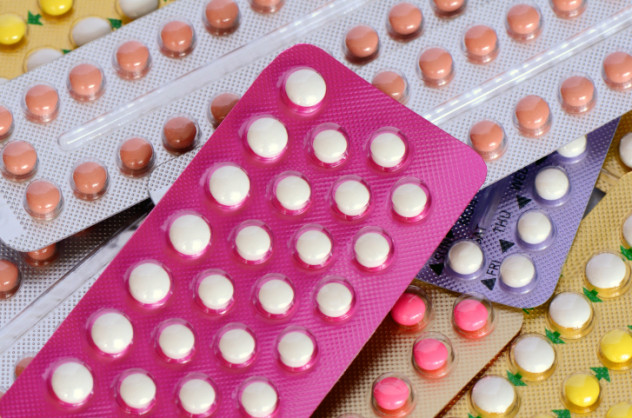
Know anyone who’s on the pill? They’re also spreading pregnancy prevention to marine wildlife, and that’s a problem.
In 2014, researchers at the University of New Brunswick released the results of a study that had been going on for several decades. They were looking at wastewater treatment and its impact on freshwater ecosystems, and they found that even trace amounts of estrogen in the environment can wipe out entire species.
In 2001, a small amount of estrogen, one of the active ingredients in birth control pills and hormone therapy treatments, was introduced into a freshwater lake research facility in Ontario. The impact was almost immediate. Male fish first began producing egg proteins and then producing eggs. Even tiny trace amounts were enough to feminize the male fish, which led to a complete crash of the ecosystem. The insect populations normally kept in check by the fish suddenly skyrocketed. As the minnow population plummeted, so did the population of the lake trout that fed on them.
It’s not just happening in research facilities, either. Calgary’s Red Deer and Oldman rivers have been hit by the same problem. The cause has been traced back to the release of improperly treated wastewater that contains hormones from hormone therapy drugs and birth control pills. Hormones that aren’t absorbed or used end up in the sewer system after they cycle through the human body. In areas where that sewer water is dumped into lakes and rivers, the average fish population is about 85 percent female, a stark contrast to the normal 55 percent. Fish exposed to the hormones not only lose the ability to reproduce, but their accidental hormone treatment impacts eggs at the development stage as well.
8 Birds On Prozac

Record numbers of people are taking antidepressant drugs like Prozac. While many of them might be concerned primarily about feeling different, they should also be concerned about what they’re doing to the environment.
According to a study from the University of York, the amount of antidepressants (specifically Prozac) that are found in the environment can be potentially devastating to birds. They started by measuring the amount of Prozac that made its way into the earthworms that were feeding on sewage and wastewater. The dose was small, only about 3 to 5 percent of an average human dose. They then fed the Prozac-laced worms to a group of 24 starlings and recorded their behavior for the next six months.
The birds began to show the same side effects to the drug that are reported in humans. They lost interest in food and stopped eating. They also lost interest in starlings of the opposite sex. The two main side effects have dual impacts; their loss of interest in food makes them weaker and less likely to make it through winter months, and their loss of libido has the potential to severely impact breeding numbers.
The birds didn’t seem to have any of the good effects of Prozac. Their general mood and disposition remained the same. Just how widespread an impact this could have on the world’s bird populations isn’t known, but it’s thought that it might have something to do with the decline in the starling population over the last few decades—to the tune of about 50 million birds.
7 Using Straws
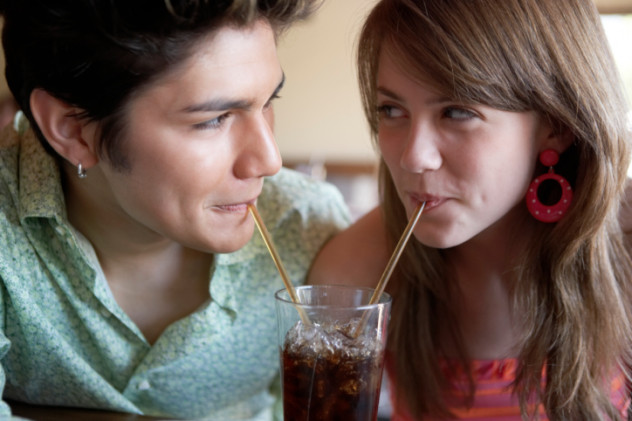
Chances are good that if you get a cold drink at any restaurant, you’ll be handed a straw, too. We curse the people working the drive-through when we’re halfway down the block and realize we don’t have one, but straws are having a pretty devastating impact on our planet.
Every day, the United States alone uses about 500 million drinking straws. For a visual, that means we could fill 46,400 school buses with straws every year. In the last 25 years, about six million of those have been picked up on beaches across the country during annual cleanups. Those are just part of the sum that ends up on the beach, and according to the Ocean Conservancy, drinking straws rank in the top 10 types of trash found floating in the ocean.
Straws are light, easily picked up by wind and water currents, and made from a polypropylene plastic that doesn’t disintegrate or dissolve. These millions of straws are around forever, making up a huge part of the estimated 12 to 24 tons of plastic that ends up ingested by fish and other marine wildlife every year. And that includes about one million seabirds that die after eating plastics. One of the most common items found in autopsies? The drinking straws that come attached to juice boxes.
6 Eating Frog

Far from exclusively a fancy French entree, frog is such a popular food that it has become a huge global industry. Bullfrogs are typically raised on farms in South America. They are then either used there for food or shipped overseas. Japan and the United States are two of the biggest consumers of frogs, with more than five million imported into the US alone each year. That’s proving fatal for countless amphibians—and not just those being eaten.
Many of the bullfrogs shipped out of South America are infected with chytrid fungus. The fungus is completely harmless to humans. The North American bullfrog is highly resistant to it, making them the ideal carrier for the fungal disease that can infect toads, salamanders, and other types of frogs.
The fungus that’s being spread by the live food trade is different than one that’s being blamed for most of the recent die-offs. It’s thought that the strain is not only being spread, but that it’s being hybridized into a new, extremely virulent strain. There are a few different strains of the fungus, and researchers from the University of Michigan have been able to track which frogs are carrying which strains into which countries. They’ve also been able to trace which strains of the fungus can reproduce with other strains, leading to more and more different varieties of deadly fungus. The consequences of the fungus and its ability to hybridize create the potential to unleash an epidemic across the globe.
5 Using Antibacterial Soap
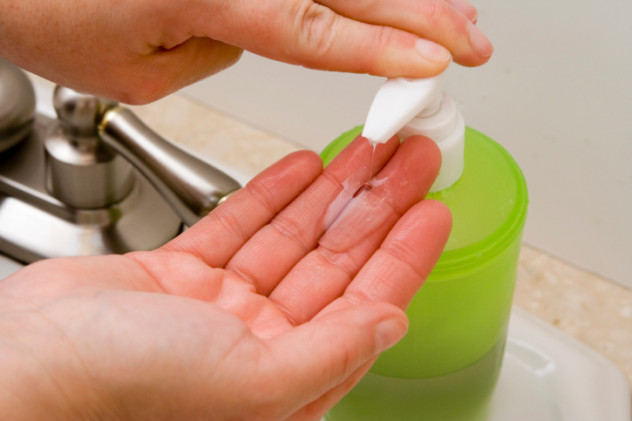
There’s been a lot of debate about just how effective antibacterial soaps are and whether or not they should even be marketed, but using them has been proven to have an impact on the environment.
Johns Hopkins University Center for Water and Health has done a study on just what happens to all the antibacterial chemicals in your antibacterial soaps after they swirl down the drain. The most commonly used chemicals are triclocarban and triclosan, and while most of those chemicals are removed from wastewater when they’re run through a treatment plant, they have to go somewhere. That somewhere is sewage sludge, which is then recycled for agricultural use. From there, those chemicals are transferred into the ground and ultimately into surface water.
When triclocarban degrades, it degrades into two chemicals—both carcinogens. When triclosan is run through a treatment plant to make drinking water, it doesn’t exactly make safe drinking water. Instead, it makes other chemicals that can include chloroform. And those chemicals travel through the food chain in plants, animals, and ultimately humans. The Centers for Disease Control and Prevention found traces of the chemicals originating with antibacterial soap in 75 percent of urine samples tested, all taken from people over five years old.
Triclosan has been shown to interfere with the basic biological systems of a number of animals, including rats and a range of amphibians. It interferes with thyroid function, and when it builds up in the body, it causes early puberty in young animals, infertility, obesity, and cancer. Triclosan collects in the body’s fatty tissues, and since animals—and humans—are higher up on the food chain, that means we’re consuming all the trace amounts found in lower animals and getting a massive dose of the stuff.
4 Keeping The Family Cat
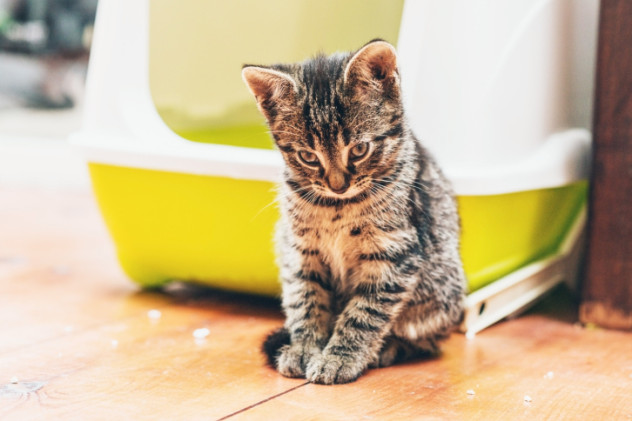
If you have an indoor cat, you probably go through a lot of cat litter. It’s a pretty new invention, only around since 1947 when a Michigan woman asked Edward Lowe if he knew of an alternative to the sand or ash that she had been using. Lowe, who worked in the industrial absorbents business, gave her some clay—and the rest is history.
There is, of course, a big problem with that history. For decades, at least 75 percent of the different brands of cat litter available were made from bentonite clay. The clay is what gives the litter its scoopable quality. Considering America alone uses about 2 million tons of cat litter every year, that’s a lot of clay the industry needs.
So how do we get it? Strip mining. Lots and lots of strip mining. While that’s bad no matter the angle, some people have had it incredibly bad. In 1989, Canada’s Mineral Tenure Act was amended to include one of the key ingredients in cat litter—diatomaceous earth. That meant that suddenly, companies had the right of free entry onto people’s land without a time limit to look for valuable minerals. Landowners in Canada have found their property strip mined for cat litter. Technically, landowners need to be compensated, but that process can take years. The Bepple family was one such victim, finding a plot of land they once used for grazing livestock and farming trees suddenly being strip mined for cat litter.
There are tons of alternatives to clay litter on the market, from recycled paper litter to wood and plant-based litters. Those options aren’t always widely available, though. In many cases, they can be incredibly costly.
3 Eating Farm-Raised Fish
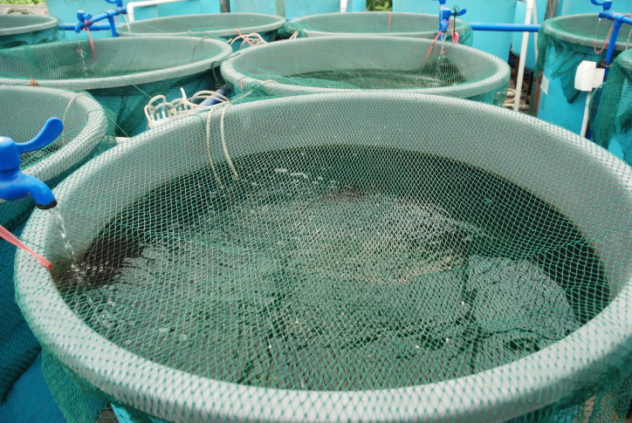
If there’s anything that seems like it’s an eco-friendly dinner choice, it’s farm-raised fish. You’re not removing fish from the open ocean, you’re not putting other animals in danger, and you’re not even adding to emissions given off from fishing boats. But farm-raised fish come with their own set of problems, and they’re definitely not the eco-friendly choice you’d think.
Shrimp aquaculture has resulted in the large-scale degradation of coastal areas, the destruction of wetlands, and salinization of freshwater areas and drinking water. Salmon farming relies on the release of fish food and nutrients into the water, which always results in wasted feed and a huge amount of fish droppings in the water. That’s normally not a problem, but when a lot of fish are farmed in a small area, it’s too much for the ecosystem to handle naturally.
Extra waste products end up sinking to the bottom where they react with the medicines and other nutrients used to keep the fish healthy along with antifoulant agents used to keep nets clean. That means fish farms are a breeding ground for sea lice, which are as disgusting as they sound. More chemicals are used to control the sea lice, which end up killing the other marine life that was supposed to be in the area in the first place.
There’s also the very, very good chance that nonnative species of farmed fish are going to escape. That’s introducing an invasive species to an ecosystem not prepared to handle it, and that means a whole other set of problems. Like many other environmental problems, there’s absolutely no easy answer. Environmental agencies are now looking for ways to improve husbandry practices worldwide.
2 Eating Soy
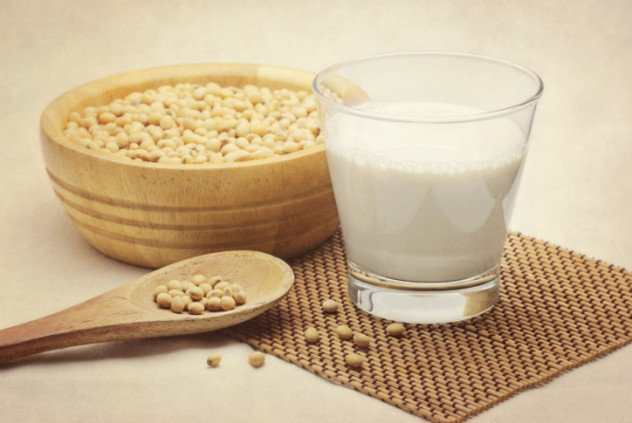
Turning to soy products has long been heralded as the healthier, more eco-friendly, and certainly more cow-friendly alternative to dairy products. Unfortunately, recent studies have shown that the environmental impact of soybean production is pretty devastating, too.
Soybeans aren’t just used in products like milk substitutes. They’re also being used for non-consumables like soap and candles. And we’re not the only ones eating soy, either; about 80 percent of the world’s soy production goes into livestock feed.
There’s a huge demand for soy. As it grows in popularity, more space is needed to grow the beans. Since 2008, deforestation in Brazil has been on a steady decrease, a direct result of a ban implemented in order to counteract deforestation. The need for the ban comes on the heels of Greenpeace’s numbers, which indicated that about 1.2 million hectares of soy was planted in Brazil’s rain forest in 2005 alone.
In addition to the usual impacts of things like pesticides and water use, there’s a huge human rights issue that’s grown up around the development of soy, too. The Brazilian government keeps a list of farms that have been caught using slave labor, and soy farms throughout the Amazon basin have been found guilty of luring people there with work, then seizing their documents and forcing them into slavery. There’s also the rather shady practice of land-grabbing, leading to countless families being kicked off land that’s deemed more valuable for farming than for living.
1 Not Finishing Your Dinner

Most of us grew up hearing that we’d better clean our plates, but it’s a bigger problem than our parents probably ever realized. Every year, global food waste amounts to about 1.3 billion tons, and that’s such a big number that it’s impossible to imagine. It’s costing us about $750 billion annually, and the environmental waste is just as staggering.
Three times the annual flow of the Volga River is wasted on producing food that gets thrown away, yielding 3.3 billion tons of greenhouse gases. About 28 percent of our agricultural land is used to produce waste food. Clearing more and more land is putting countless plants and animals at risk.
Meanwhile, about 870 million people are starving.
A lot of the waste comes at the processing levels, but consumer waste is also incredibly high. Fruits and vegetables are often thrown away for being misshapen, not necessarily spoiled. There’s a lot of food that’s thrown away at the best-by date regardless of whether the food has spoiled. Many consumers think that the sell-by date and the best-by dates are the same, but that’s just not the case.
While plans are in place for reducing waste like packaging food in smaller containers and offering lower prices for less-than-perfect foods, there’s still a long, long way to go.








